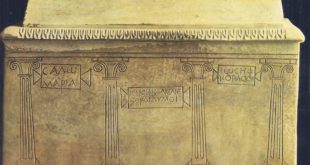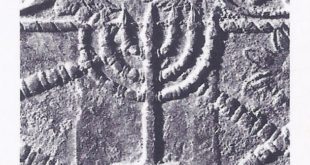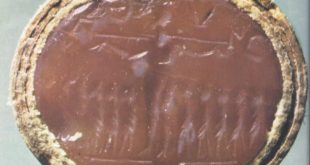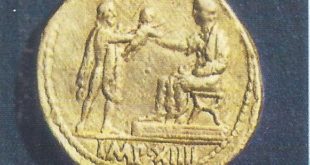With the collapse of Crete, the Mediterranean focus moves to Greece. The destruction of Knossos in 1450 B.C. precipitated the end of a brilliant period in Cretan civilization. The focus of power, subsequently lay on the Greek mainland, in the great fortress-cities of Mycenae and Tiryns. These cities were remembered in Homeric legend, in the poems of the Iliad and the Odyssey. Confirmation as fact of what scholars had credited merely as legend was provided by the excavation of the site of Homer’s “Mycenae rich in gold” by the German merchant-turned-archaeologist, Heinrich Schliemann, in 1876. His discoveries there brought to light the “Mycenaean” civilization, which we now know to have been widespread in Greece from c. 1400 – 1200 B.C. It was the product of Indo-European settlers and these Mycenaean Greeks took control after the collapse of Crete, from where much of their culture originated, as the presence of Linear B tablets on both Crete and the mainland indicates.

The society which Homeric legend describes is not a society at its peak, as many scholars have noted, and the epics of “Homer” (whoever or whatever Homer might represent) foreshadow the downfall of the Mycenaean civilization. The decline of the Achaean Greeks was speeded-up by an abrupt end to their political supremacy, when the Dorian tribes swept southwards in about 1100 B.C. This may well have been part of a larger pattern of migrations that affected the western Mediterranean at about this time. The empire of the Hittites was overthrown and Egypt was attacked by the “Peoples of the Sea.” The Dorian invasion precipitated emigration of earlier Greek inhabitants from the mainland — Ionians from Attica fled to the coastal lands of Asia Minor, as did Aeolians from Thessaly; Achaeans moved into Arcadia and Cyprus.

The Dorian invaders themselves settled in the Peloponnese and prior to the collapse in Crete, as well as a part of Asia Minor. The regional differences established during this period of movement and settlement were remembered by the Greeks — Sparta was always thought of as Dorian. After the Dorian invasion, Greece gradually assumed the political configuration that was to last until Alexander of Macedon reorganised the civilized world.
The City-state after the Collapse of Crete
The key to Greek political development and indeed to Greek civilization, is the Greek city, or more accurately, city-state, the polis. The physical geography of Greece — small plains separated from each other by steep hills and mountain chains — must have influenced the development of small, closely-knit communities, though the choice of organization was the Greeks’. They saw the polis as the only and the ultimate form of political and social life. Unlike elsewhere in the eastern Mediterranean, the Greek city was not part of a larger unit, such as a kingdom, but was an independent state in itself.
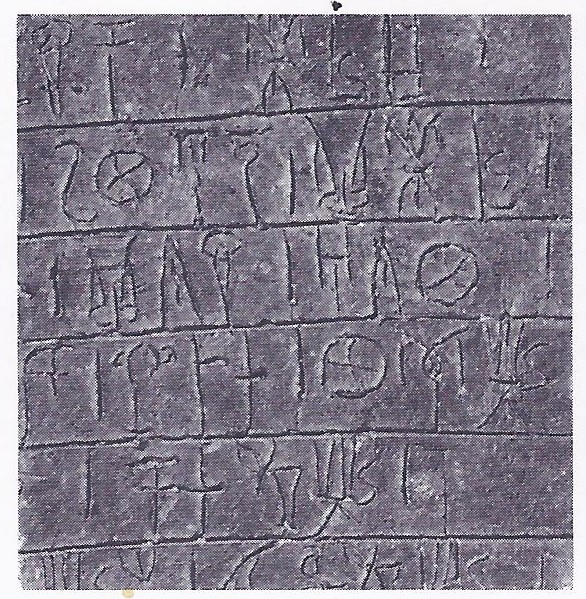
The cities of Greece must have provided their inhabitants with a stable and secure existence, for population in the cities had increased until it became a problem by the eighth century B.C. The geographic confinement which had partly determined the development of the cities also determined the limits of their growth — land was scarce. So yet another migratory movement got under way. This time it was not the helter-skelter movement of whole tribes, but the planned sending-out of real colonists. The knowledge that the Greeks possessed of the Mediterranean was somewhat hazy, but enough for many thousands to set out optimistically to find a new life. They headed in the direction of southern Italy and Sicily, Asia Minor and the Black Sea, each pioneering group with its oikistes, the official “founder” of the new city.

This colonization was not like the colonization of, for example, the British Empire, where the parent-country retained political control over its colonies. Once the settlers had made a landfall and established themselves in their new environment, they were on their own, virtually independent of their mother-city. Regular trading contacts were in many cases set up, the parent-cities tending to trade with their individual offspring. The wealth of a city like Corinth was undoubtedly augmented by trade with her many colonies, but the offspring prospered too — the Corinthian colony of Syracuse became one of the greatest of the Greek cities. The colonizing movement lasted for about two hundred years, from the eighth to the sixth century and towards its end trade and commercial motivations had taken supremacy over the original “land-hunger” motive.

The political and economic consequence of colonization for the Mediterranean world was that Greek influence and interests had spread far afield, ranging into the territories of diverse peoples. Southern Italy became predominately Greek (with Sicily, it was known as Megale Hellas, Magna Graecia), all along the coasts of Asia Minor there were Greek settlements, and Greeks even penetrated Egypt, establishing trading stations at Naucratis, Syria and a colony at Al Mina.
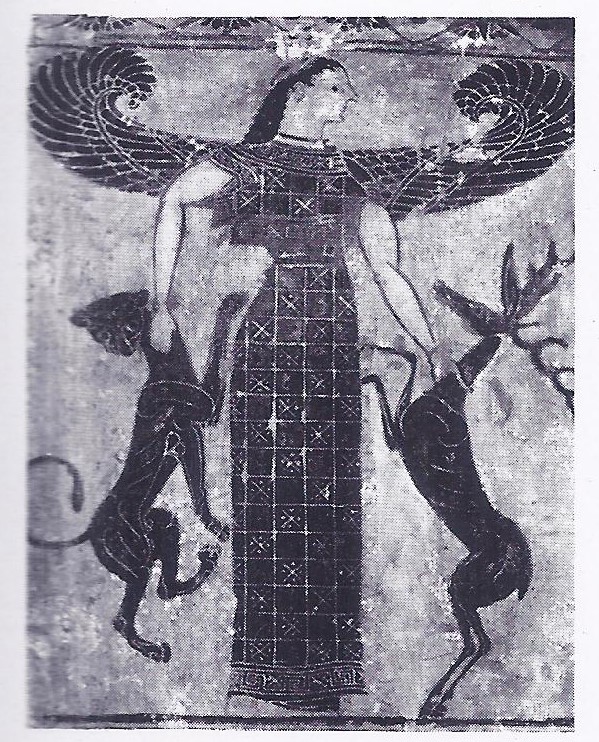
Cultural Interchange after the Collapse of Crete
Colonization was not the sole prerogative of the Greeks. Greek expansion in Sicily was limited by the colonizing efforts of the Phoenicians, the skillful sea-farers who inhabited the area of present day Lebanon. They founded several important cities on the Mediterranean coast of Spain also, though perhaps their most important foundation was the city of Carthage in North Africa, whose famous son Hannibal is the subject of a subsequent history. Greek settlement in southern Italy was also limited by the expansion of the Etruscans in central Italy in the seventh and sixth centuries B.C. Etruscan kings ruled the small city of Rome during the sixth century and the fate of the Greeks, the Carthaginians, the Etruscans and the Romans are all interlinked as future history shows. Political confrontation was to occur between various groupings of these powers, but an example of the importance of cultural interchange during this formative period is provided by the spread of the alphabet. The Linear B script was difficult and clumsy to write — only the Greeks of Cyprus retained it for long — and in the eighth century the Greeks took over the Phoenician alphabet and developed it in various forms. From the Greeks of Chalcis, the Etruscans adopted a version; from them the Romans borrowed and modified it.

Cultural interchange on a large scale followed the Greek colonization of the East. The Greeks were eager to assimilate and learn from the eastern cultures. The “orientalizing” trend is evident in Greek pottery from the eighth century, with the use of motifs from Syria and Phoenicia (and the Phoenicians borrowed from the Egyptians). From the Greeks in Italy the Etruscans learned the arts of civilization; they were eager for all the trappings of Hellenization, as the material remains of their culture indicate. From them Rome absorbed Greek culture.
Evidence takes us to the point in Mediterranean history at which the expansion of the colonizing period has become with only minor exceptions a thing of the past and expansion now means large-scale political confrontation. The cities of Greece were forced to unite to save themselves from domination by the mighty empire of Persia.
Political organization
The Greece that confronted Xerxes had evolved politically. Within the city-states of Greece, internal government went through a variety of forms. Sparta had two kings, whose power could vary according to the strength of their individual personalities vis-a-vis the council of elders — the ephors –who also made up the governing body of the state. Below the kings and ephors was an elite class of citizens; below them, various grades of semi-slaves and slaves, but during the Archaic period, most Greek cities were ruled by aristocracies. As individual cities grew and new economic interests and commercial expansion emerged, the hold of the landed aristocrats was challenged and gradually superceded by people of new wealth. The form of government thus tended to shift from aristocracy (rule or power of the best) to oligarchy (rule of the few).
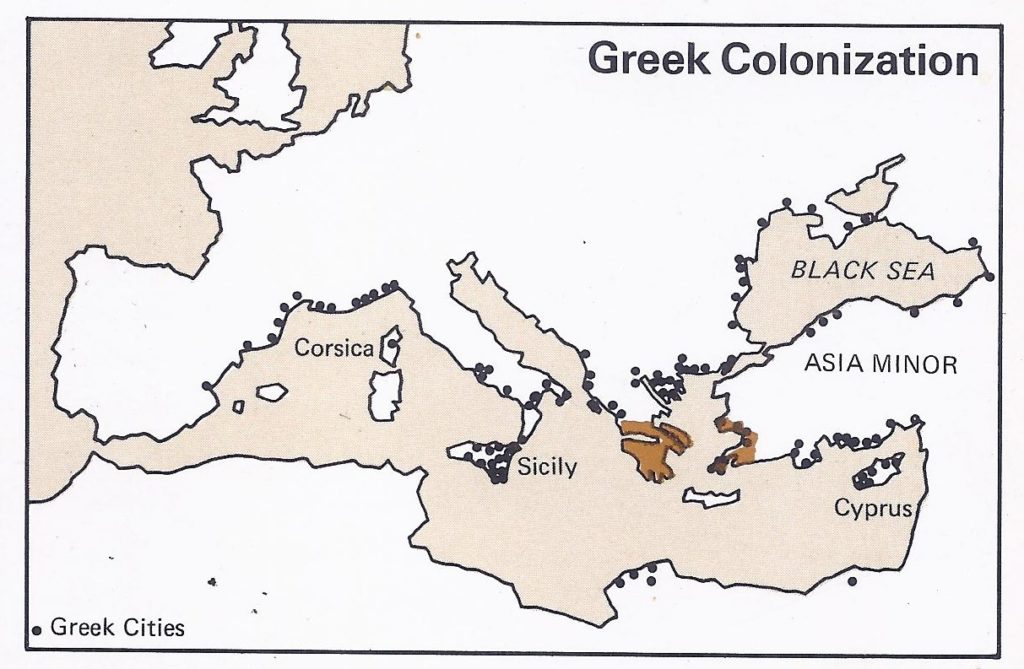
This shift in political power was often accompanied by improvements in justice — subjecting the administration of city life to the relative impartiality of written laws rather than the arbitrary and biased decisions of powerful landowners, the “princes who devour bribes and give crooked decisions” mentioned by Hesiod. The process of changing political organization to represent new interests was often hastened, from the seventh century on, by the appearance of “tyrants,” individual leaders, frequently of noble ancestry, who were hostile to the aristocracy as a whole. Tyrants (only later did the word become symbolic of oppression) arose mainly in the coastal cities of Greece that had trading interests: the First tyrants were at Sicyon and Corinth. Athens, too, had her tyrant, a noble called Cylon, in 630 B.C., but her internal problems remained and a reformer was given power to clear up some of the inconsistencies in Athens’ political and social organization.
The work of this senior citizen and law-giver, Solon, gave political recognition to new forces within Athenian society, but still many problems were unresolved and thirty years later another tyrant emerged. He established himself firmly enough to found a dynasty. Although short-lived, the dynasty of the Peisistratids gave Athens a period of stability during which she prospered. As it happened, the fall of the Peisistratids paved the way for democracy in Athens.
In Greek politics, the tendency was for tyrants (individual rulers) to be succeeded by a coalition of important men, oligarchs. Two factions of nobles competed for control when the last tyrant had been deposed and one faction, headed by a noble called Cleisthenes, had enlisted popular support. When Cleisthenes gained control, he carried out a thorough reform of the Athenian constitution and considerably reduced the remaining power of the nobles that was vested in the council of the Areopagus. The assembly of the people of Athens became paramount: democracy (the power of the people) was achieved and given perhaps its fullest expression ever.
At Salamis, the democratically elected leaders of the Athenian people confronted the power of an oriental autocrat, the fleet of Xerxes, Great King of the Persians. The empire that he ruled had emerged from the ruins of Assyrian and Median power. The Persians were given a new-found unity by Cyrus (559 – 529) and under his rule the Achaemenid empire expanded at a phenomenal rate. Lydia was conquered, then the Persians advanced to the edge of the Mediterranean, conquering the Greek cities there. Caria, Lycia and Cilicia came under Persian domination, Babylon fell and Syria along with Palestine were subdued. Egypt was conquered after Cyrus’ death by his son Cambyses (525 B.C.). Thus the whole of the eastern Mediterranean was in Persian hands. History further shows how the European expansion of Persian power was stemmed by a great naval battle in the Aegean.
